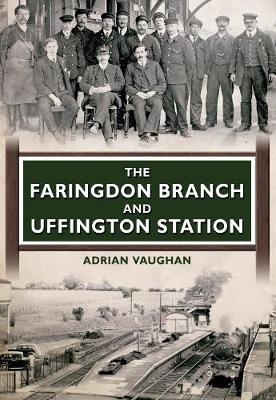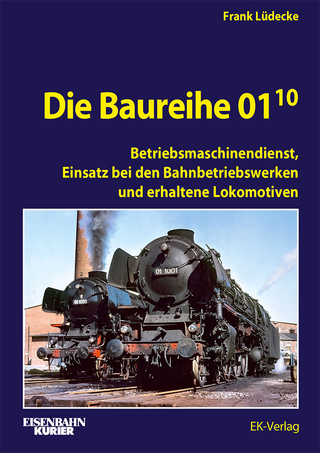
The Faringdon Branch and Uffington Station
Seiten
2010
Amberley Publishing (Verlag)
978-1-4456-0105-2 (ISBN)
Amberley Publishing (Verlag)
978-1-4456-0105-2 (ISBN)
The story of the GWR's branch line between Faringdon and the London to Bristol mail line.
The Great Western Railway's main line from London to Bristol, opened throughout in 1841, passed by the ancient market town of Faringdon at a distance of 3A miles to the south. This bypassed town began to go into decline, and planning for a broad gauge railway to connect Faringdon with the GWR main line and thus re-establish a link with the outside world began in 1860. The Faringdon branch railway was built out of equal parts of local patriotism, personal prestige and the desire to improve the business prospects of the town. After the opening of the line, in 1864, new industries were created in the town. Farmers were able to send milk to London. Employment prospects were improved. The railway served the area well through the summer of England's Imperial power and through the miserable winter of an enormous war. With the introduction of the petrol-engined lorries and buses after the Great War, its freight and passenger traffic was gradually taken away. The directors of the GWR knew it was a liability as early as 1925, but they ran it at a loss all the same. It was not closed to passengers until December 1951 and to freight in 1964.
The Great Western Railway's main line from London to Bristol, opened throughout in 1841, passed by the ancient market town of Faringdon at a distance of 3A miles to the south. This bypassed town began to go into decline, and planning for a broad gauge railway to connect Faringdon with the GWR main line and thus re-establish a link with the outside world began in 1860. The Faringdon branch railway was built out of equal parts of local patriotism, personal prestige and the desire to improve the business prospects of the town. After the opening of the line, in 1864, new industries were created in the town. Farmers were able to send milk to London. Employment prospects were improved. The railway served the area well through the summer of England's Imperial power and through the miserable winter of an enormous war. With the introduction of the petrol-engined lorries and buses after the Great War, its freight and passenger traffic was gradually taken away. The directors of the GWR knew it was a liability as early as 1925, but they ran it at a loss all the same. It was not closed to passengers until December 1951 and to freight in 1964.
Adrian Vaughan was born in Reading in January 1941 and grew up closely in touch with the GWR and its nationalised successor. He was a volunteer porter at Challow station from 1953 to 1956, during which time he learned how to drive a steam engine and work a signal box. In 1960, after 4½ years in the army, he joined the staff of Challow and became a signalman at Uffington a few months later. He was a signalman for fourteen years and an amateur footplateman for six. He produced his first book on his beloved railway in 1971 and has produced over thirty books to date.
| Zusatzinfo | 47 Illustrations |
|---|---|
| Verlagsort | Chalford |
| Sprache | englisch |
| Maße | 172 x 248 mm |
| Gewicht | 415 g |
| Themenwelt | Natur / Technik ► Fahrzeuge / Flugzeuge / Schiffe ► Schienenfahrzeuge |
| ISBN-10 | 1-4456-0105-2 / 1445601052 |
| ISBN-13 | 978-1-4456-0105-2 / 9781445601052 |
| Zustand | Neuware |
| Haben Sie eine Frage zum Produkt? |
Mehr entdecken
aus dem Bereich
aus dem Bereich
St. Moritz – Zermatt : die Traumreise im langsamsten Schnellzug der …
Buch | Hardcover (2023)
Verlag Berg & Tal
CHF 25,90
Betriebsmaschinendienst, Einsatz bei den Bahnbetriebswerken und …
Buch | Hardcover (2024)
EK-Verlag
CHF 68,90
Buch | Hardcover (2023)
GeraMond (Verlag)
CHF 41,90


